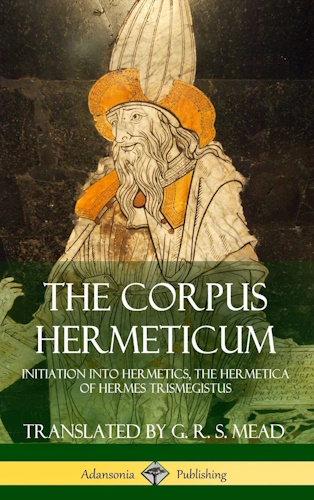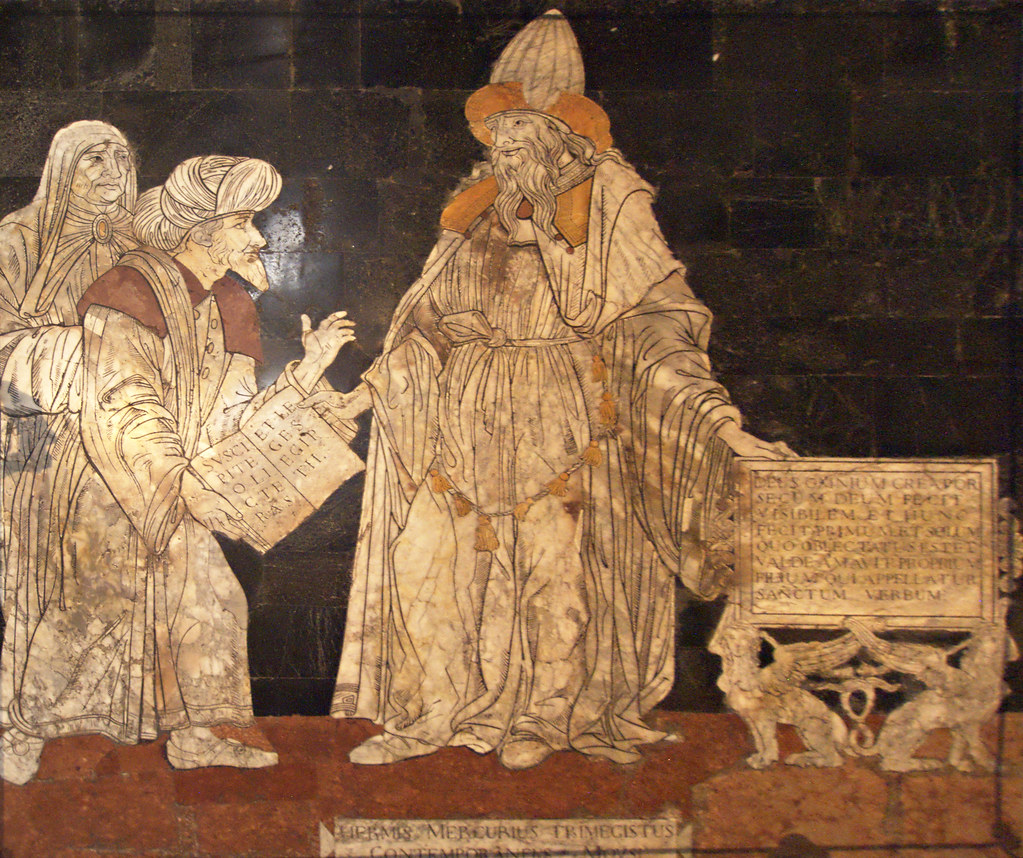
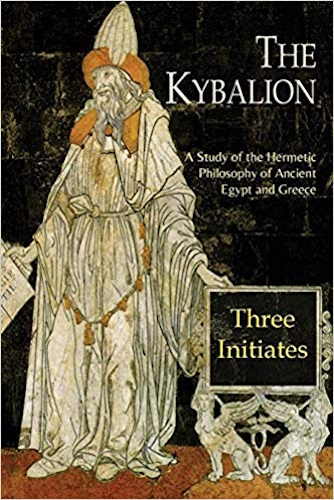

![Thrice-Greatest Hermes; Studies in Hellenistic Theosophy and Gnosis [Three Volumes in One] Thrice-Greatest Hermes; Studies in Hellenistic Theosophy and Gnosis [Three Volumes in One]](http://realityroars.com/images/affiliate-creative/thrice-greatest-hermes--studies-in-hellenistic-theosophy-and-gnosis.jpg)

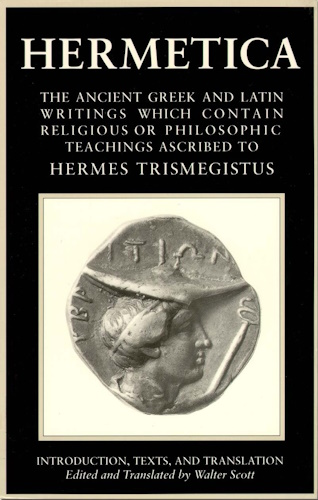



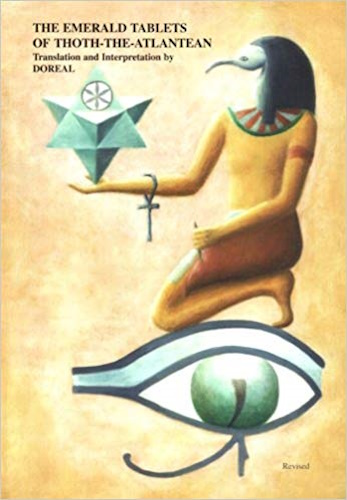

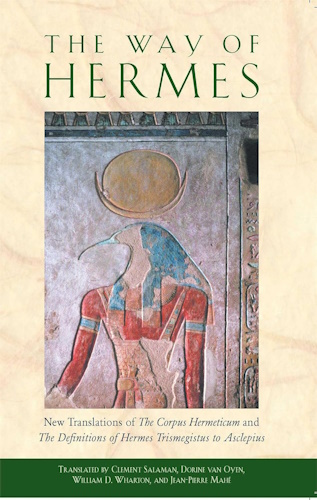

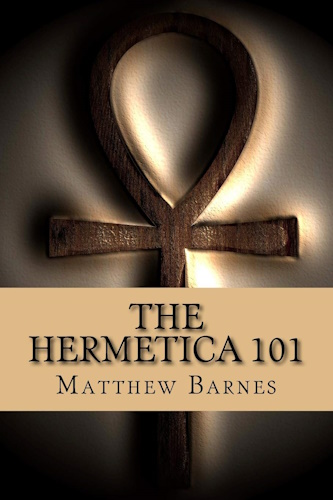

![]()
![]()
An Introduction to the Corpus Hermeticum
by John Michael Greer
The fifteen tractates of the Corpus Hermeticum, along with the Perfect Sermon or Asclepius, are the foundation documents of the Hermetic tradition. Written by unknown authors in Egypt sometime before the end of the third century C.E., they were part of a once substantial literature attributed to the mythic figure of Hermes Trismegistus, a Hellenistic fusion of the Greek god Hermes and the Egyptian god Thoth.
This literature came out of the same religious and philosophical ferment that produced Neoplatonism, Christianity, and the diverse collection of teachings usually lumped together under the label "Gnosticism": a ferment which had its roots in the impact of Platonic thought on the older traditions of the Hellenized East. There are obvious connections and common themes linking each of these traditions, although each had its own answer to the major questions of the time.
The treatises we now call the Corpus Hermeticum were collected into a single volume in Byzantine times, and a copy of this volume survived to come into the hands of Lorenzo de Medici's agents in the fifteenth century. Marsilio Ficino, the head of the Florentine Academy, was pulled off the task of translating the dialogues of Plato in order to put the CorpusHermeticum into Latin first. His translation saw print in 1463, and was reprinted at least twenty-two times over the next century and a half.
The treatises divide up into several groups. The first (CH I), the "Poemandres", is the account of a revelation given to Hermes Trismegistus by the being Poemandres or "Man-Shepherd", an expression of the universal Mind. The next eight (CH II-IX), the "General Sermons", are short dialogues or lectures discussing various basic points of Hermetic philosophy. There follows the "Key" (CH X), a summary of the General Sermons, and after this a set of four tractates - "Mind unto Hermes", "About the Common Mind", "The Secret Sermon on the Mountain", and the "Letter of Hermes to Asclepius" (CH XI-XIV) - touching on the more mystical aspects of Hermeticism. The collection is rounded off by the "Definitions of Asclepius unto King Ammon" (CH XV), which may be composed of three fragments of longer works.
The Perfect Sermon
The Perfect Sermon or Asclepius, which is also included here, reached the Renaissance by a different route. It was translated into Latin in ancient times, reputedly by the same Lucius Apuleius of Madaura whose comic-serious masterpiece The Golden Ass provides some of the best surviving evidence on the worship of Isis in the Roman world. Augustine of Hippo quotes from the old Latin translation at length in his City of God, and copies remained in circulation in medieval Europe all the way up to the Renaissance. The original Greek version was lost, although quotations survive in several ancient sources.
The Perfect Sermon is substantially longer than any other surviving work of ancient Hermetic philosophy. It covers topics which also occur in the Corpus Hermeticum, but touches on several other issues as well - among them magical processes for the manufacture of gods and a long and gloomy prophecy of the decline of Hermetic wisdom and the end of the world.
The Significance of the Hermetic Writings
The Corpus Hermeticum landed like a well-aimed bomb amid the philosophical systems of late medieval Europe. Quotations from the Hermetic literature in the Church Fathers (who were never shy of leaning on pagan sources to prove a point) accepted a traditional chronology which dated "Hermes Trismegistus," as a historical figure, to the time of Moses. As a result, the Hermetic tractates' borrowings from Jewish scripture and Platonic philosophy were seen, in the Renaissance, as evidence that the Corpus Hermeticum had anticipated and influenced both. The Hermetic philosophy was seen as a primordial wisdom tradition, identified with the "Wisdom of the Egyptians" mentioned in Exodus and lauded in Platonic dialogues such as the Timaeus. It thus served as a useful club in the hands of intellectual rebels who sought to break the stranglehold of Aristotelian scholasticism on the universities at this time.
It also provided one of the most important weapons to another major rebellion of the age - the attempt to reestablish magic as a socially acceptable spiritual path in the Christian West. Another body of literature attributed to Hermes Trismegistus was made up of astrological, alchemical and magical texts. If, as the scholars of the Renaissance believed, Hermes was a historical person who had written all these things, and if Church Fathers had quoted his philosophical works with approval, and if those same works could be shown to be wholly in keeping with some definitions of Christianity, then the whole structure of magical Hermeticism could be given a second-hand legitimacy in a Christian context.
This didn't work, of course; the radical redefinition of Western Christianity that took place in the Reformation and Counter-Reformation hardened doctrinal barriers to the point that people were being burned in the sixteenth century for practices that were considered evidences of devoutness in the fourteenth. The attempt, though, made the language and concepts of the Hermetic tractates central to much of post-medieval magic in the West.
The Translation
The translation of the Corpus Hermeticum and Perfect Sermon given here is that of G.R.S. Mead (1863-1933), originally published as Vol. 2 of his Thrice Greatest Hermes(London, 1906). Mead was a close associate of Helena Petrovna Blavatsky, the founder and moving spirit of the Theosophical Society, and most of his considerable scholarly output was brought out under Theosophical auspices. The result, predictably, was that most of that output has effectively been blacklisted in academic circles ever since.
This is unfortunate, for Mead's translations of the Hermetic literature were until quite recently the best available in English. (They are still the best in the public domain; thus their use here.) The Everard translation of 1650, which is still in print, reflects the state of scholarship at the time it was made - which is only a criticism because a few things have been learned since then! The Walter Scott translation - despite the cover blurb on the recent Shambhala reprint, this is not the Sir Walter Scott of Ivanhoe fame - while more recent than Mead's, is a product of the "New Criticism" of the first half of this century, and garbles the text severely; scholars of Hermeticism of the caliber of Dame Frances Yates have labeled the Scott translation worthless. By contrast, a comparison of Mead's version to the excellent modern translation by Brian Copenhaver, or to the translations of CH I (Poemandres) and VII (The Greatest Ill Among Men is Ignorance of God) given in Bentley Layton's The Gnostic Scriptures, shows Mead as a capable translator, with a usually solid grasp of the meaning of these sometimes obscure texts.
There is admittedly one problem with Mead's translation: the aesthetics of the English text. Mead hoped, as he mentioned at the beginning of Thrice Greatest Hermes, to "render...these beautiful theosophic treatises into an English that might, perhaps, be thought in some small way worthy of the Greek originals." Unfortunately for this ambition, he was writing at a time when the last remnants of the florid and pompous Victorian style were fighting it out with the more straightforward colloquial prose that became the style of the new century. Caught in this tangle like so many writers of the time, Mead wanted to write in the grand style but apparently didn't know how. The result is a sometimes bizarre mishmash in which turn-of-the-century slang stands cheek by jowl with overblown phrases in King James Bible diction, and in which mishandled archaicisms, inverted word order, and poetic contractions render the text less than graceful - and occasionally less than readable. Seen from a late twentieth century sensibility, the result verges on unintentional self-parody in places: for example, where Mead uses the Scots contraction "ta'en" (for "taken"), apparently for sheer poetic color, calling up an image of Hermes Trismegistus in kilt and sporran.
The "poetic" word order is probably the most serious barrier to readability; it's a good rule, whenever the translation seems to descend into gibberish, to try shuffling the words of the sentence in question. It may also be worth noting that Mead consistently uses "for that" in place of "because" and "aught" in place of "any", and leaves out the word "the" more or less at random.
Finally, comments in (parentheses) and in [square brackets] are in Mead's original; those in <angle brackets> are my own additions.


![Thrice-Greatest Hermes; Studies in Hellenistic Theosophy and Gnosis [Three Volumes in One] Thrice-Greatest Hermes; Studies in Hellenistic Theosophy and Gnosis [Three Volumes in One]](http://realityroars.com/images/affiliate-creative/thrice-greatest-hermes--studies-in-hellenistic-theosophy-and-gnosis.jpg)











-
Urantia Book, 44:0.11 - The Celestial Artisans
Never in your long ascendancy will you lose the power to recognize your associates of former existences. Always, as you ascend inward in the scale of life, will you retain the ability to recognize and fraternize with the fellow beings of your previous and lower levels of experience. Each new translation or resurrection will add one more group of spirit beings to your vision range without in the least depriving you of the ability to recognize your friends and fellows of former estates.
-
Princess Bride 1987 Wallace Shawn (Vizzini) and Mandy Patinkin (Inigo Montoya)
Vizzini: HE DIDN'T FALL? INCONCEIVABLE.
Inigo Montoya: You keep using that word. I do not think it means what you think it means. -
Urantia Book, 117:4.14 - The Finite God
And here is mystery: The more closely man approaches God through love, the greater the reality -- actuality -- of that man. The more man withdraws from God, the more nearly he approaches nonreality -- cessation of existence. When man consecrates his will to the doing of the Father's will, when man gives God all that he has, then does God make that man more than he is.
-
Urantia Book, 167:7.4 - The Talk About Angels
"And do you not remember that I said to you once before that, if you had your spiritual eyes anointed, you would then see the heavens opened and behold the angels of God ascending and descending? It is by the ministry of the angels that one world may be kept in touch with other worlds, for have I not repeatedly told you that I have other sheep not of this fold?"
-
Urantia Book, Foreword - 0:12.12 - The Trinities
But we know that there dwells within the human mind a fragment of God, and that there sojourns with the human soul the Spirit of Truth; and we further know that these spirit forces conspire to enable material man to grasp the reality of spiritual values and to comprehend the philosophy of universe meanings. But even more certainly we know that these spirits of the Divine Presence are able to assist man in the spiritual appropriation of all truth contributory to the enhancement of the ever-progressing reality of personal religious experience—God-consciousness.
-
Urantia Book, 1:4.3 - The Mystery Of God
When you are through down here, when your course has been run in temporary form on earth, when your trial trip in the flesh is finished, when the dust that composes the mortal tabernacle "returns to the earth whence it came"; then, it is revealed, the indwelling "Spirit shall return to God who gave it." There sojourns within each moral being of this planet a fragment of God, a part and parcel of divinity. It is not yet yours by right of possession, but it is designedly intended to be one with you if you survive the mortal existence.
-
Urantia Book, 1:4.1 - The Mystery Of God
And the greatest of all the unfathomable mysteries of God is the phenomenon of the divine indwelling of mortal minds. The manner in which the Universal Father sojourns with the creatures of time is the most profound of all universe mysteries; the divine presence in the mind of man is the mystery of mysteries.
-
Urantia Book, 1:4.6 - The Mystery Of God
To every spirit being and to every mortal creature in every sphere and on every world of the universe of universes, the Universal Father reveals all of his gracious and divine self that can be discerned or comprehended by such spirit beings and by such mortal creatures. God is no respecter of persons, either spiritual or material. The divine presence which any child of the universe enjoys at any given moment is limited only by the capacity of such a creature to receive and to discern the spirit actualities of the supermaterial world.
-
Urantia Book, 11:0.1 - The Eternal Isle Of Paradise
Paradise is the eternal center of the universe of universes and the abiding place of the Universal Father, the Eternal Son, the Infinite Spirit, and their divine co-ordinates and associates. This central Isle is the most gigantic organized body of cosmic reality in all the master universe. Paradise is a material sphere as well as a spiritual abode. All of the intelligent creation of the Universal Father is domiciled on material abodes; hence must the absolute controlling center also be material, literal. And again it should be reiterated that spirit things and spiritual beings are real.
-
Urantia Book, 50:6.4 - Planetary Culture
Culture presupposes quality of mind; culture cannot be enhanced unless mind is elevated. Superior intellect will seek a noble culture and find some way to attain such a goal. Inferior minds will spurn the highest culture even when presented to them ready-made.
-
Urantia Book, 54:1.6 - True And False Liberty
True liberty is the associate of genuine self-respect; false liberty is the consort of self-admiration. True liberty is the fruit of self-control; false liberty, the assumption of self-assertion. Self-control leads to altruistic service; self-admiration tends towards the exploitation of others for the selfish aggrandizement of such a mistaken individual as is willing to sacrifice righteous attainment for the sake of possessing unjust power over his fellow beings.
-
Urantia Book, 54:1.9 - True And False Liberty
How dare the self-willed creature encroach upon the rights of his fellows in the name of personal liberty when the Supreme Rulers of the universe stand back in merciful respect for these prerogatives of will and potentials of personality! No being, in the exercise of his supposed personal liberty, has a right to deprive any other being of those privileges of existence conferred by the Creators and duly respected by all their loyal associates, subordinates, and subjects.
-
Urantia Book, 54:1.8 - True And False Liberty
There is no error greater than that species of self-deception which leads intelligent beings to crave the exercise of power over other beings for the purpose of depriving these persons of their natural liberties. The golden rule of human fairness cries out against all such fraud, unfairness, selfishness, and unrighteousness.

